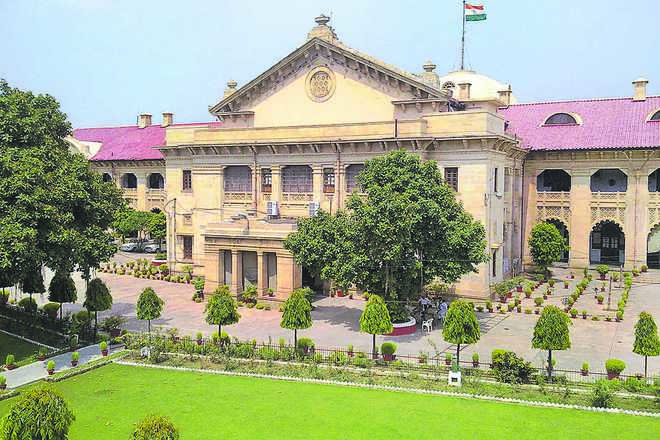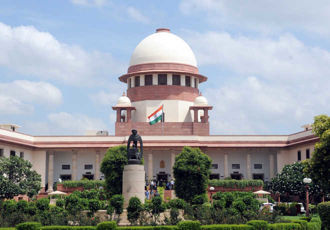
The Allahabad High Court is the largest high court in the country and its heritage is virtually unrivalled.
Saurabh Malik
AGE has not withered, nor custom staled, the perceptible brilliance embracing Allahabad High Court's infinite ability to balance the scales. The winds of change blowing hard across all institutions did hit the foundation of justice laid 150 years ago at Allahabad, with the Supreme Court virtually indicting it for something being “rotten”. But the grandeur of the past surrounding the country's largest High Court endures, unweathered.
This is an attempt to see what made the fourth-oldest High Court in the country deliver luminous judgments that became laws of the land.
The Chief Justice of the Allahabad High Court (1994-95), Justice SS Sodhi, belongs to the galaxy of distinguished jurists and judges who have contributed immensely to its standing in the judiciary. “The largest in the country, the Allahabad High Court had the unique distinction of having some of the greatest judges. Its natural fallout was the delivery of landmark and path-breaking judgments that still hold water and are culled out of the law books before being quoted by the warring sides during court hearings,” holds Justice Sodhi.
The Allahabad High Court also has a long tradition of judicial independence. Quoting an example, Justice Sodhi says: “In 1937, during the tenure of the Chief Justice, Sir John Gibb Thom, the Chief Secretary to the United Provinces Government sent a letter to several sessions judges in the state commenting upon the adverse effect of the frequent grant of bail to persons accused of criminal offences. A copy of this letter was forwarded by a sessions judge to the High Court for advice. The Chief Justice took strong exception to this letter. The government was directed to withdraw the letter forthwith, while the Chief Secretary was given one week to tender an apology or else face a charge of contempt of court. The Chief Secretary immediately withdrew the letter and apologised”.
Agreeing, legal historian and the Chandigarh Judicial Academy’s Director (Academics), Balram K Gupta, says the Allahabad High Court’s heritage is virtually unrivalled. It’s leading lights — Pandit Motilal Nehru, Sir Tej Bahadur Sapru and Pandit Kanhaiya Lal Misra — were unmatchable. “The legacy has been carried forward, though not in the sense it was in the pre-Constitutional era,” Gupta asserts. For, a former Chief Justice of the Andhra Pradesh High Court, Justice Manmohan Singh Liberhan, the Allahabad High Court’s is the story of heritage somewhat losing its sheen. “It was started by eminent personalities, but has ended in chaos,” he declares.
Functioning from two locations, the High Court has its main seat at Allahabad and a Bench at Lucknow. “History and tradition have combined to confer upon both these locations their unique and distinct characteristics, with a tinge of mutual hostility too,” Justice Sodhi observes. Its ancestry can be traced to “the Sudder Diwanny Adawlat”, which came into being at Agra in 1831. At that time the seat of the Government was in Agra. But in less than three decades, it shifted to Allahabad. Soon thereafter, came the High Courts Act in 1861, providing not only for the establishment of High Courts at Calcutta, Madras and Bombay, but also for courts in other parts of Her Majesty's territories not included in the jurisdiction of any other high court. The Adawlat was replaced by the High Court for the North-Western Provinces, which came into being on March 17, 1866. The court was created by a Letters Patent or an open document issued by a monarch or government conferring a patent or other right. The Letters Patent, subsequently amended, constituted the Charter of the Allahabad High Court.
The Adawlat was abolished on June 13, 1866, with the appointment of Sir Walter Morgan as the first Chief Justice, alongwith five other judges. The record of the function or ceremony commemorating the final shifting of the High Court from Agra to Allahabad is not available. It is believed the six Judges walked in silently before taking their seats to commence work, as if they were completely unmindful of the grand change. Apparently, “the judges quietly and without any further ado went and sat in the court at Allahabad and commenced proceedings,” says Justice Sodhi. In 1869, the full court began its sittings at Allahabad.


























